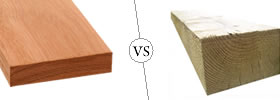Difference between DPI and Pixels
Key Difference: DPI is a unit of measurement, which determines how many individual dots can fit into a 1x1 inch square. Pixels are a basic measuring unit in computer imagery.
DPI or Dots per Inch is a unit of measurement, which determines how many individual dots can fit into a 1x1 inch square. These are used to measure the resolution of monitors, TV, when printing images using a printer. When describing the resolution of monitors and TVs, it is usually confused with pixels per inch (PPI), which is how many pixels can be fitted into an inch. Video displays are rated in a dot pitch, which refers to the space between sub-pixel red, green and blue dots of a pixel.
 In terms of printing DPI is used to describe the resolution of dots per inch in a digital print or photo. This is most commonly related to the type of printer a person has. Depending on the printer, it can print images with different resolutions. For example, a dot matrix printer can print in the range of 60 to 90 DPI, while an inkjet printer is capable of printing 300-600 DPI and a laser printer can print 600-1,800 DPI. Higher DPI of images results in a high resolution of the image, which produces a crisp and clean picture. In printing, DPI (dots per inch) refers to the output resolution of a printer, while PPI (pixels per inch) refers to the input resolution of a photograph or image. When printing an image, a person should ensure that the DPI is equal or higher than the PPI, in order to produce a sharp and clear image. Many printers also come with built-in default DPI settings in order to produce proper and clear images in every print.
In terms of printing DPI is used to describe the resolution of dots per inch in a digital print or photo. This is most commonly related to the type of printer a person has. Depending on the printer, it can print images with different resolutions. For example, a dot matrix printer can print in the range of 60 to 90 DPI, while an inkjet printer is capable of printing 300-600 DPI and a laser printer can print 600-1,800 DPI. Higher DPI of images results in a high resolution of the image, which produces a crisp and clean picture. In printing, DPI (dots per inch) refers to the output resolution of a printer, while PPI (pixels per inch) refers to the input resolution of a photograph or image. When printing an image, a person should ensure that the DPI is equal or higher than the PPI, in order to produce a sharp and clear image. Many printers also come with built-in default DPI settings in order to produce proper and clear images in every print.
![]() Pixels are a basic measuring unit in computer imagery. It is used in cameras, screens, TVs, etc. anywhere an image is displayed. It is used to measure the screens that can display these pictures. Pixels are only in the digital world and do not actually exist in the real world making no direct correlation to any physical quantity. It is also considered as a physical point in a raster image or the smallest element that is displayed in an image. An image is often made up of small pixels that come together to form a bigger picture. Pixels can also be used as color dots to create a whole image, where pixels represent colors in the image.
Pixels are a basic measuring unit in computer imagery. It is used in cameras, screens, TVs, etc. anywhere an image is displayed. It is used to measure the screens that can display these pictures. Pixels are only in the digital world and do not actually exist in the real world making no direct correlation to any physical quantity. It is also considered as a physical point in a raster image or the smallest element that is displayed in an image. An image is often made up of small pixels that come together to form a bigger picture. Pixels can also be used as color dots to create a whole image, where pixels represent colors in the image.
Notice when an image is magnified to its full extent, it shows tiny squares that make up the picture. This is pixels; these pixels together make up the image that is being displayed. Screens and TVs that are available these days come in fixed pixel amount, which is given under resolutions. This determines the quality of the image that would be available on the screen. The higher the resolution, the higher the pixel count, results in a better image.
In addition to resolution, DPI also affects the pixels and the look of the image. If the number of pixels (resolution) is increased but the DPI is kept the same, this would result in a big image. However, if the DPI is increased and the resolution is maintained the same, it would result in a smaller image. The higher amount of resolution of the number of pixels that are in the image allows the users to increase the size of the image with only slight degradation.
Image Courtesy: forums.zenfolio.com, photo.net









Add new comment